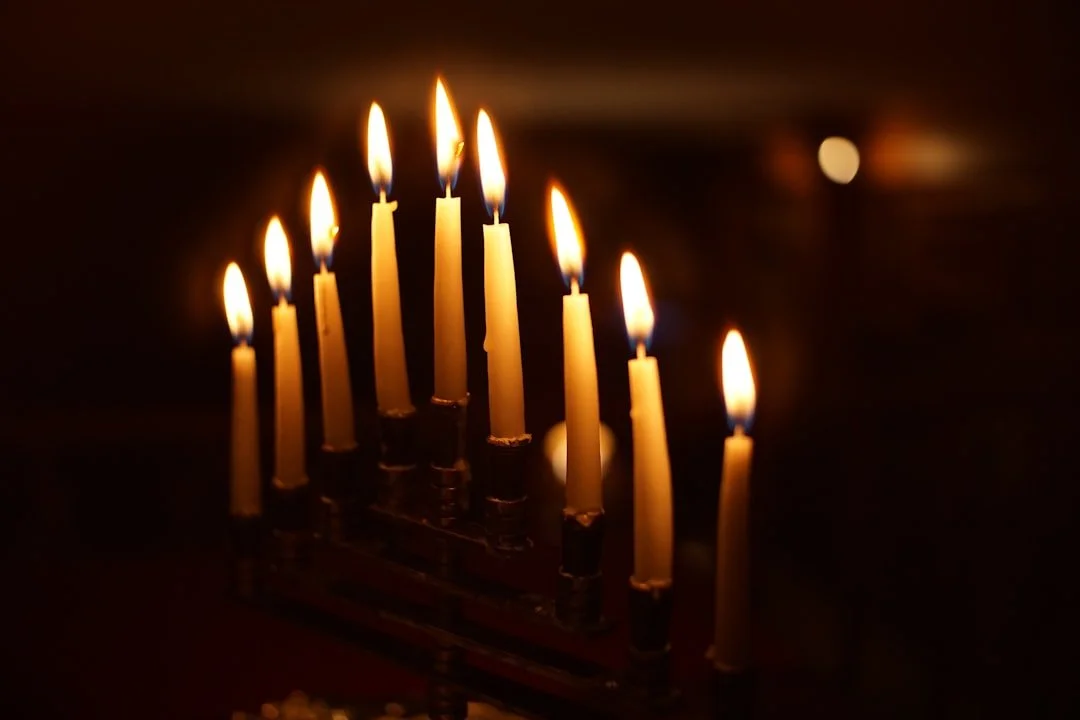From Rabbi Fred, for February 2025 / Shvat 5785
Blessings for a superb, salutary, sustainable Shvat! And for a fabulous February, which overlaps neatly with our new Hebrew month. It’s the height of winter in the northern climes from which so many JCK participants hail; on much of the mainland, deciduous trees are decidedly bare, and spring feels far off. Yet our tradition notes that even in those colder darker days, the sap is rising, and the process toward new verdancy is unfolding as it should.
The Mishnah tells us of four different New Years, of which Rosh Hashanah (1 Tishrei) is just one. Animals have their own, a month earlier (Elul 1); kings and infrastructure are commemorated just before Pesach (Nissan 1); and the timing for trees turns over in winter, at the full moon, on the 15th of Shvat. (In alpha-numerics, the number 15 should be rendered as10+5, but that would yield Yod-Hey, Yah, a Divine name – so we substitute 9+6, Tet-Vav, and pronounce it “tu.” Thus our Jewish Arbor Day, in the middle of this month, is known as “Tu b’Shvat”.).
This may seem odd, but a certain wisdom inheres here. We are those who take the long view, who faithfully affirm that the barren branches before us will yet re-grow greenery, and songbirds absent now will again alight upon them. Leo Tolstoy supposedly said, “there’s hope for a people who celebrate trees in the middle of a Russian winter!”
The Mishnah is most concerned with tithing cycles, so originally, Shvat 15 was akin to April 15. The medieval mystics made hay of this holiday, since in Kabbalah, divinity gets diagrammed as a tree (truly, a tree-shaped set of ten spheres of godly emanation, the s’firot). Early Zionists embraced Tu B’shvat anew, as they made tree-planting a core practice and modern mitzvah.
In recent decades, as awareness has grown of our interdependence with trees and with all the biosphere, Tu B’Shvat has become a sort of Jewish Earth Day. So this month, Jews around the world are tuning into what tradition tells us about stewardship and sustainability. Much is summed up in the mandate given to the first humans in the initial ecosystem (Genesis 2:15), l’ovdah u’l’shomrah – that we should serve/work, and guard/protect, the land. The only unavailable option is to let its condition worsen on our watch.
Jewish wisdom gives us so much that’s great and green! A few highlights include: the law of minimizing waste (bal tashchit); a calendar that ties us to nature’s rhythms, plus prayers and psalms that root us in the natural world; the need to honor the land and the animals, as in the laws of Shabbat and Shmita/Sabbatical, where long-term holiness and sustainability trump any short-term incentives toward production and consumption; and so much more. These perspectives may seem counter-cultural in this national moment, but that just makes them more necessary, as they are key parts of our timeless Torah-rooted tradition.
To sum up eco-Jewish consciousness, we should prioritize sustainability for three big reasons: starting with, for Creation itself. The other beings around us have their own rights to thrive; and since God ordained them and all of nature as good, who are we to disagree?! (Martin Buber notes that “love of the Creator, and love of that which God has created, are finally one and the same”).
Second, in our justice-oriented tradition, we center climate concerns around vulnerable people, those first and worst hit by pollution and its adverse global effects – so we go green in the name of tzedek and mishpat, justice and righteousness.
And finally, we do it for our own descendants, l’dor vador, from generation to generation. Climate change’s ravages spare no one, and those who come after us will wish us to have been responsible and forward-thinking ancestors. The famous command to “choose life” (Deut. 30:19) is not just a present-tense concern; the phrase continues, “so that you and your progeny may live.”
Indeed, as with celebrating trees in mid-winter, we should ever take the long view, and accept responsibility. Even as society back-slides and political realities impede progress, the imperative toward sustainability remains a Jewish mandate incumbent on each of us, with metrics of success measurable only in the far future. For now we must overcome fear and marshal faith, to persevere in doing what we know is right, and to redouble our efforts to save all that we can.
However eco-friendly we believe ourselves to be, there’s more to be done. From what and how and how often we drive, to what we put on our plates, to where we invest, to what we purchase and how we dispose of it, even to the many miles we fly anytime we leave the state or even the county/island – “ecology” is etymologically the study of the house, and all these considerations and more unfold within it. Even the numbers of the house (“eco-nomy”) remain secondary; the economy is no end unto itself, it’s just a subset of our interconnected whole.
Concrete steps we can take to live lighter on Earth are not just good ideas; they’re mitzvot, holy actions, required of us as people of faith and conscience. Nor is Judaism unique in insisting on sustainability: every great religion, and every enduring indigenous culture, has its own unique perspectives and framings for the universal value of (to use Pope Francis’ mellifluous language) “Care for Our Common Home.” Parallel wisdom from these sacred isles includes melama, mutual care – ohana, interdependence – kuleana, responsibility – and of course, the spirit of aloha. (See www.HIPL.org/home/about-us for more).
As Tu b’Shvat comes and goes – and as many seasons of insufficient national and global action unfold ahead of us – what can and will we each do, to more fully live out these Jewish and human values, and to respect the environment as profoundly and consistently as we ought? This is perhaps the key question of our time. And just as “every day is Earth Day”, may Shvat’s metaphorical greenness tinge every moment, and every month, of our lives.
Shvat Shalom!
L’shalom, Fred
Rabbi Fred Scherlinder Dobb, D. Min. (he/him)


